Last Updated on April 19, 2024 by Michelle
Once upon a time soft, fluffy, whole wheat dinner rolls only existed in my dreams.
Excitedly I unboxed my first-ever grain mill a few years ago, milled my wheat berries, mixed up bread dough, and waited for it…
{drumroll, please}
I thought the heavens would open in elation.
I thought the family would devour my creation with joy and beg for more.
Not.
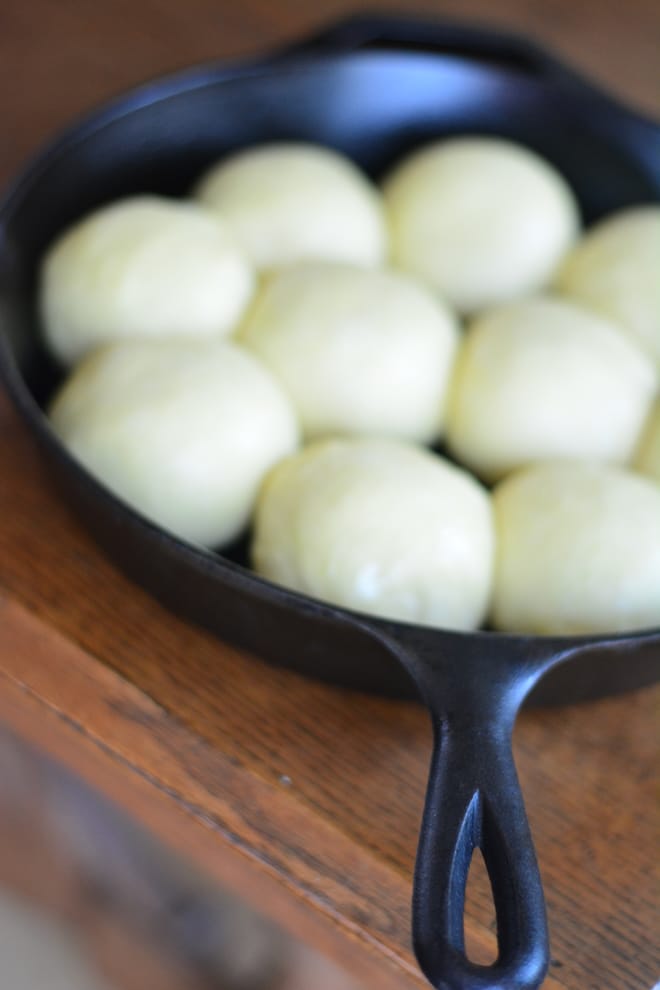
100% whole wheat, freshly milled isn’t for the faint of heart
My loaves made great doorstops. Nobody wanted to eat them. Honestly, they really weren’t edible.
This went on for a while, until I eventually decided that using fresh, whole wheat flour was just too difficult and I set my mill aside, defeated, to collect dust. But not forever! Hallelujah, I uncovered some tips and tricks and I’ve finally converted my kitchen over to only using 100% fresh milled, whole wheat flour.
And–the best part (insert a genuine drumroll)–our breads and dinner rolls taste good!
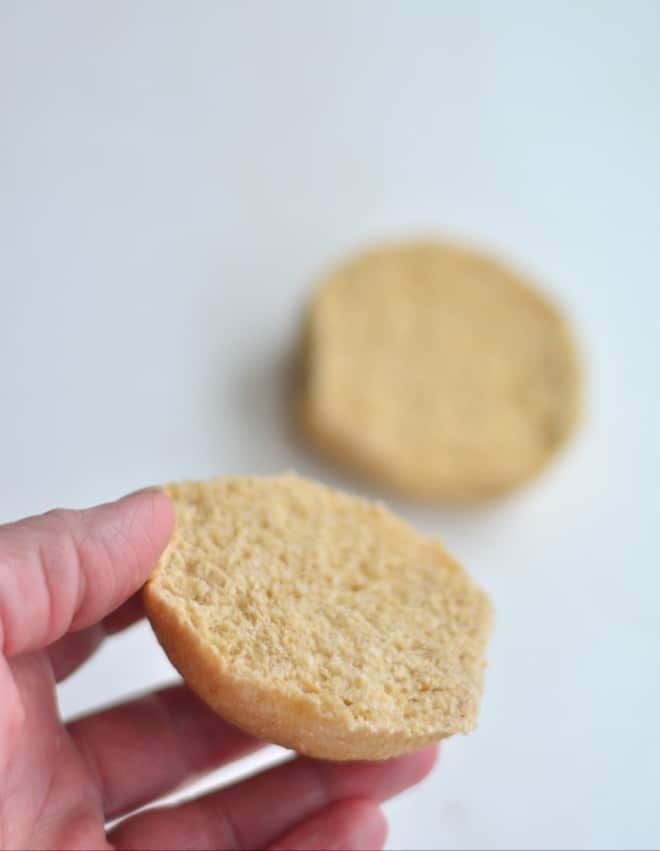
Are whole wheat dinner rolls hard to make?
This whole wheat roll recipe has a few more steps than your typical dinner roll would have, but it’s so worth it! They come out softer than any rolls I’ve made, including ones made with white bread flour! The extra steps (making a tangzhong and mixing butter into the dough) both help create a soft, stretchy, glutenous dough that’s easy to work with and results in the fluffiest rolls you’ll ever make. You seriously won’t be able to stop eating these.
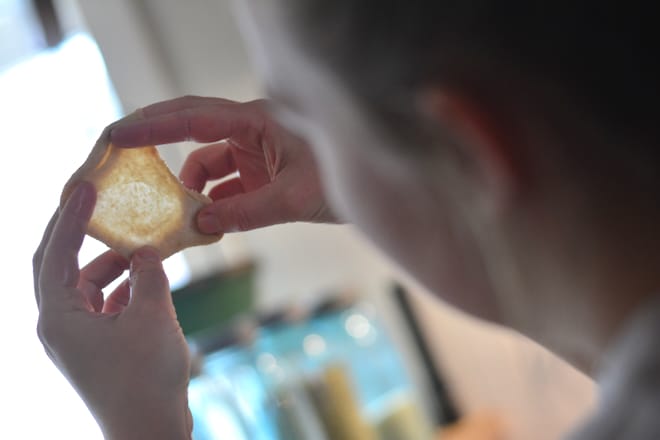
What’s the secret to making whole wheat dinner rolls fluffy?
In this recipe, the combination of adding a fat (butter), adding a tangzhong (read on for more details), and using vital wheat gluten creates a perfect harmony.
The result? A perfectly fluffy dinner roll that dreams are made of.
Not only does the tangzhong help improve the texture of your rolls, but it also helps keep your bread products soft and perfectly fluffy for many days. In fact, we’ve kept these rolls at room temperature for up to 5 days and they stay as luxuriously pillowy (is that a word?) as they started out.
What’s a tangzhong?
A tangzhong is a roux of sorts, kinda like a roux you would make for homemade gravy. But it uses flour, instead of water. It’s simply a paste you make from flour and cooked milk.
A tangzhong improves the texture of your bread or rolls and (bonus!) increases it’s shelf life, meaning your rolls will taste as fresh on day 3 or 4 as they do on day 1.
Is whole wheat bread better for you?
In short, yes, fresh milled, whole wheat bread is 100% better for you than store-bought bread or bread you make with refined all-purpose flour.
It’s hard to quickly characterize all the crazy differences between refined, store-bought flour and fresh milled, whole wheat flour, but the differences are astronomical.
Go here for lots of reasons why I started milling my own flour.
Just by milling my own whole wheat flour at home, I’ve dramatically raised my family’s intake of protein, fiber, magnesium, iron, potassium, and so many more great things. In fact, whole wheat flour, milled at home and used within 3 days of milling, has been found to include 40 out of 44 of the essential minerals that our bodies need!
So cool, right?
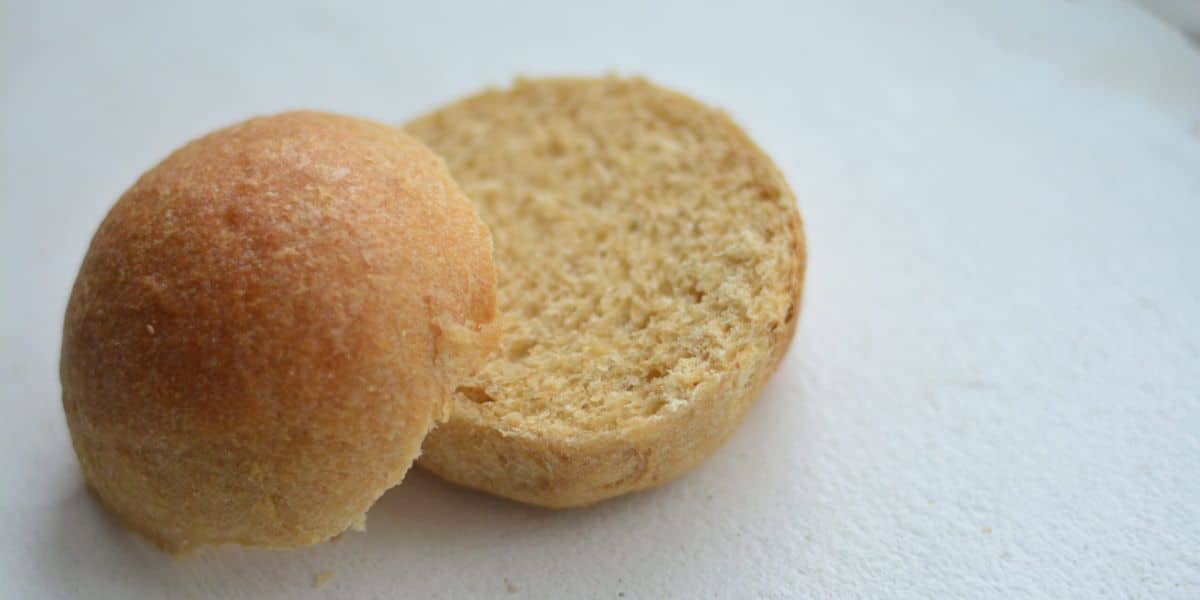
Fluffy 100% whole wheat dinner rolls
(makes 12 large rolls, enough to fill a 9×13 pan)
Ingredients
- 1 cup plus 2 tbsp milk, separated
- about 2.5 cups fresh milled flour (I use a mixture of hard white, hard red, and Kamut)
- 2 tbsp vital wheat gluten*
- 1 large egg
- 2 1/4 tsp instant yeast
- 3 tbsp sugar (I use this or this)
- 1 tsp real salt
- 1/4 cup butter, at room temperature
Instructions for making tangzhong
- To make your tangzhong, start by whisking together 1/3 cup cold milk and 2 heaping tablespoons of flour, in a sauce pan.
- Place over high heat, stirring constantly, until the mixture is thickened, about 3 minutes.
- Set this aside for a few minutes, to cool slightly.
Instructions for making dinner rolls
- In the bowl of your stand mixer, combine your tangzhong, the rest of the milk, vital wheat gluten, egg, yeast, sugar, salt, and about half the flour. Mix.
- Add more flour, slowly, until a shaggy dough forms. I tend to err on the side of adding less flour than I’ll probably need, and add more, slowly, every few minutes as the dough kneads.
- Knead the dough for 10-12 minutes (yes, it’s a long time–I’ve found that longer kneading times helps a whole wheat dough develop stronger gluten). Continue kneading until your dough seems stretchy and strong.
- Slowly add the room temperature butter in chucks, as the mixer continues kneading. Allow the dough to knead for another 3-5 minutes until the butter is all mixed into the dough, with no chunks remaining. The dough should be soft, workable, and stretchy. At this point, you should be able to achieve a decent windowpane if you’ve kneaded the dough long enough. (To test for windowpane, pull a chuck of dough off and stretch it between your fingers, as in the picture above. If you can get it thin enough to see some light through without the dough instantly ripping, you’re in the right ballpark.) You don’t want the dough too stiff or too soft, but somewhere in the middle. If you’re not able to pass the windowpane “test” without the dough ripping, keep kneading longer and try again.
- Place the dough in a warm spot in an oiled bowl and let it rest for about 1-1.5 hours. The dough doesn’t have to double in size, as long as it rises some.
- Gently pull the dough out of the bowl and shape into 12 rolls, and place them evenly in a 9×13 pan.
- Set the pan aside to let the rolls rise for another 1-1.5 hours. This time you really want to give them enough time to double, if possible.
- Preheat your oven to 350, and bake the rolls for about 20 minutes, until they’re cooked through and slightly golden on top. I really try to not overcook them, infact they often look like they’re slightly undercooked when I pull them out.
- While the rolls are still hot, brush the tops with butter.
Notes about making whole wheat dinner rolls
- There’s only one roll in the pictures because I only thought to take pictures after my recent batch was all devoured except for one. This is a common occurrence around here–disappearing rolls.
- I did get one picture of a batch of rolls I baked in a 12″ cast iron pan a while ago, but my current go-to is my glass baking dish. I love for these dinner rolls to be as soft as they can be, and the cast iron tends to make the bottoms crispier.
- Don’t have vital wheat gluten? No worries. These rolls should still turn out well without it.
- Not sure what sugar you want to use to make your dinner rolls? Go here for a break down of all the best options.
- Use Redmond Real Salt in this recipe and add more than 64 trace minerals to your recipe! Use code SOULYRESTED to save & stock up on some of this amazing salt today. I buy it in the bulk size because it stores so easily and keeps forever.
- Have duck eggs? They’d add a delicious richness to this recipe. Read more about duck eggs here.
- There are many options for grain mills. These are the 3 I recommend: The Classic Nutrimill does a great job, at the lowest price point. The Harvest Mill wins for most beautiful to sit on your counter. And the Mockmill is a beautiful workhorse that wins for best engineered, best at milling alternative grains, and finest flour, but it also sits at the highest price point. More about just some of the alternative flours I make in the Mockmill here.
Fluffy 100% whole wheat dinner rolls with fresh flour
Ingredients
- 1 cup plus 2 tbsp milk separated
- about 2.5 cups fresh milled flour I use a mixture of hard white, hard red, and Kamut
- 2 tbsp vital wheat gluten*
- 1 large egg
- 2 1/4 tsp instant yeast
- 3 tbsp sugar
- 1 tsp real salt
- 1/4 cup butter at room temperature
Instructions
- In the bowl of your stand mixer, combine your tangzhong, the rest of the milk, vital wheat gluten, egg, yeast, sugar, salt, and about half the flour. Mix.
- Add more flour, slowly, until a shaggy dough forms. I tend to err on the side of adding less flour than I'll probably need, and add more, slowly, every few minutes as the dough kneads.
- Knead the dough for 10-12 minutes (yes, it's a long time--I've found that longer kneading times helps a whole wheat dough develop stronger gluten). Continue kneading until your dough seems stretchy and strong.
- Slowly add the room temperature butter in chucks, as the mixer continues kneading. Allow the dough to knead for another 3-5 minutes until the butter is all mixed into the dough, with no chunks remaining. The dough should be soft, workable, and stretchy. At this point, you should be able to achieve a decent windowpane if you've kneaded the dough long enough. (To test for windowpane, pull a chuck of dough off and stretch it between your fingers, as in the picture above. If you can get it thin enough to see some light through without the dough instantly ripping, you're in the right ballpark.) You don't want the dough too stiff or too soft, but somewhere in the middle. If you're not able to pass the windowpane "test" without the dough ripping, keep kneading longer and try again.
- Place the dough in a warm spot in an oiled bowl and let it rest for about 1-1.5 hours. The dough doesn't have to double in size, as long as it rises some.
- Gently pull the dough out of the bowl and shape into 12 rolls, and place them evenly in a 9x13 pan.
- Set the pan aside to let the rolls rise for another 1-1.5 hours. This time you really want to give them enough time to double, if possible.
- Preheat your oven to 350, and bake the rolls for about 20 minutes, until they're cooked through and slightly golden on top. I really try to not overcook them, infact they often look like they're slightly undercooked when I pull them out.
- While the rolls are still hot, brush the tops with butter.
Notes
- There's only one roll in the pictures because I only thought to take pictures after my recent batch was all devoured except for one. This is a common occurrence around here--disappearing rolls.
- I did get one picture of a batch of rolls I baked in a 12" cast iron pan a while ago, but my current go-to is my glass baking dish. I love for these dinner rolls to be as soft as they can be, and the cast iron tends to make the bottoms crispier.
- *Don't have vital wheat gluten? No worries. These rolls should still turn out well without it.
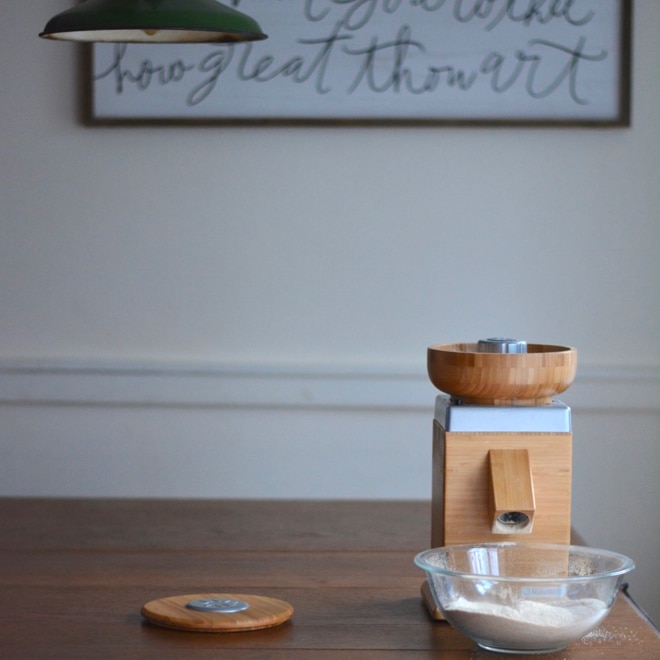
More 100% whole wheat recipes (+ other tips):
- Why I Started Milling my own Flour (& why I’ll never go back)
- Chocolate Chip Cookies Made with Fresh Flour (favorites in our house)
- Sourdough Bread Made with Fresh Flour (pretty much made weekly around here)
- How to Bake with Lard (and why you should) (one of my most popular articles)
- Learn All About Fresh Flour in my FREE e-course
“Whether you eat or drink, or whatever you do, do it all for the glory of God.” 1 Cor. 10:31
Pin this for later!
Click on the image below to pin this post.
Find out why SoulyRested was considered to be one of the One of the Top Homesteading Blogs.
Glance at my Resource Page if you’d like to get a glimpse of all the supplies I use and recommend for everything from gardening, to sugarmaking, to chicken care, to baking.
I’d love to connect!
To find me in some other neck of the woods, just click any (or every!) icon below:

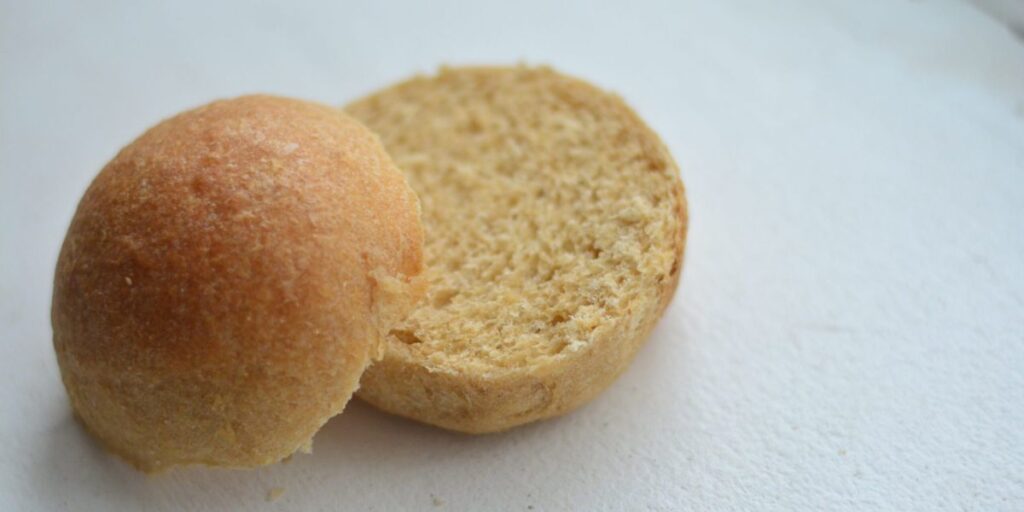
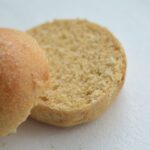
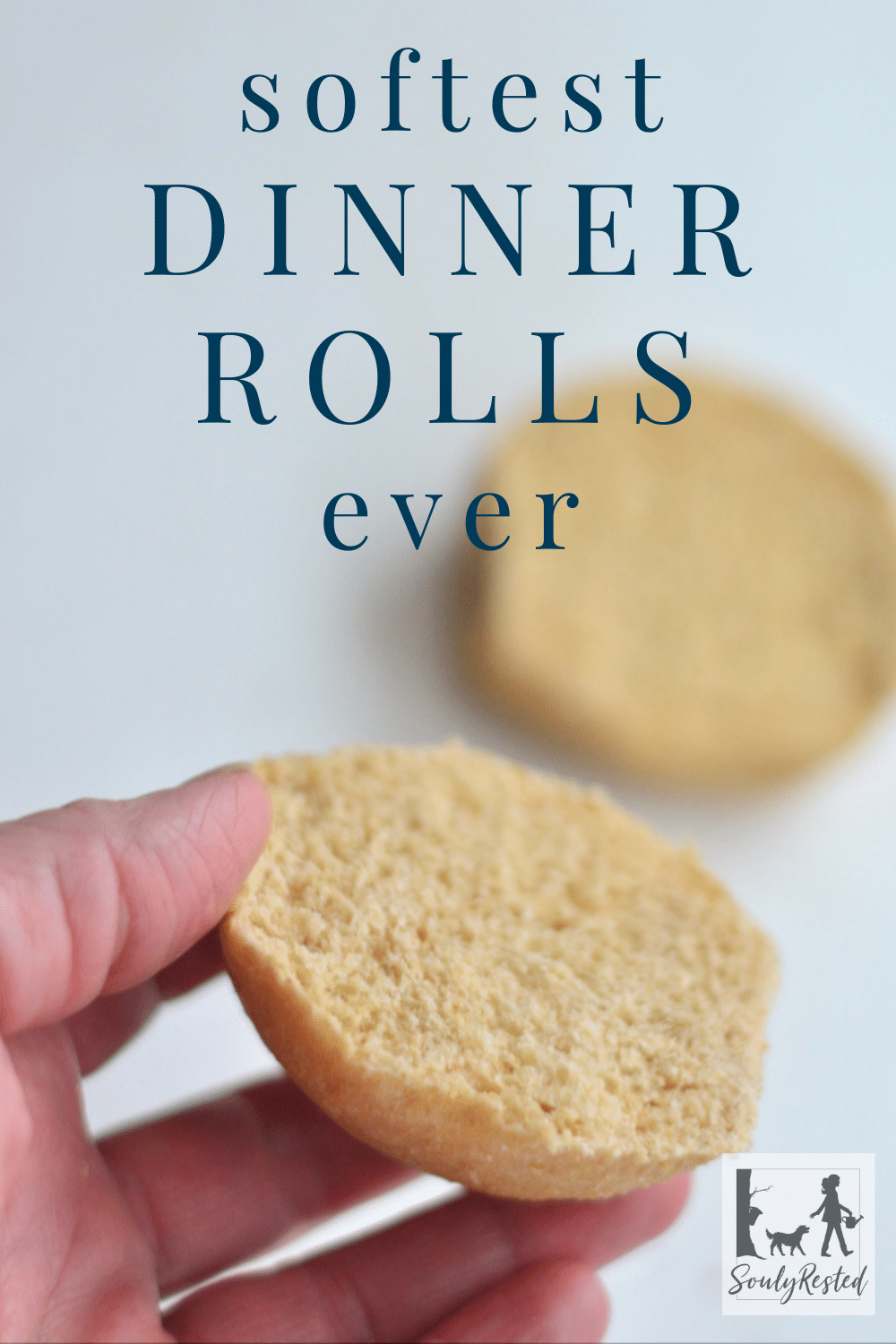




My grandma used to make the best homemade dinner rolls. I can’t wait to try this recipe with fresh-milled flour to see how it compares!
I’ve never heard of a tangzhong! This is very exciting and I can’t wait to try it!
I love this recipe! I used to grind my own grain and when the kids were still at home all my recipes were for making large amounts. This sounds like one of my favorites broken down to a smaller batch.
oooh, so you were one of the early fresh-flour pioneers?